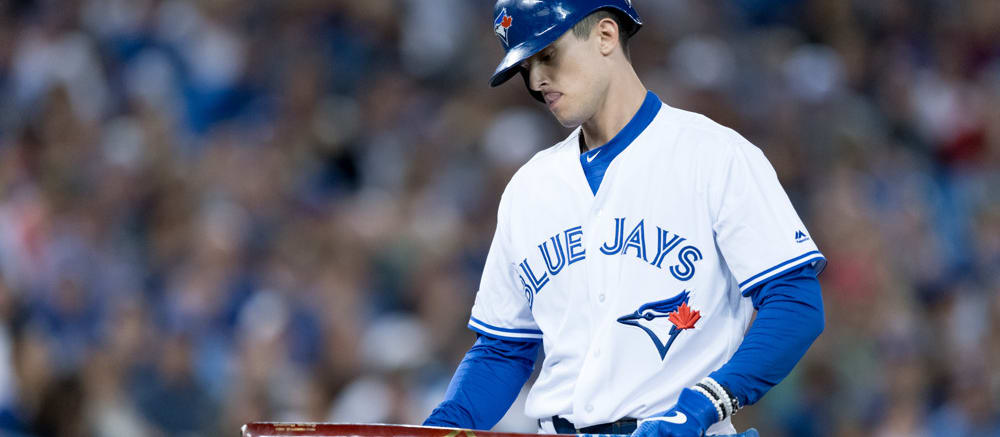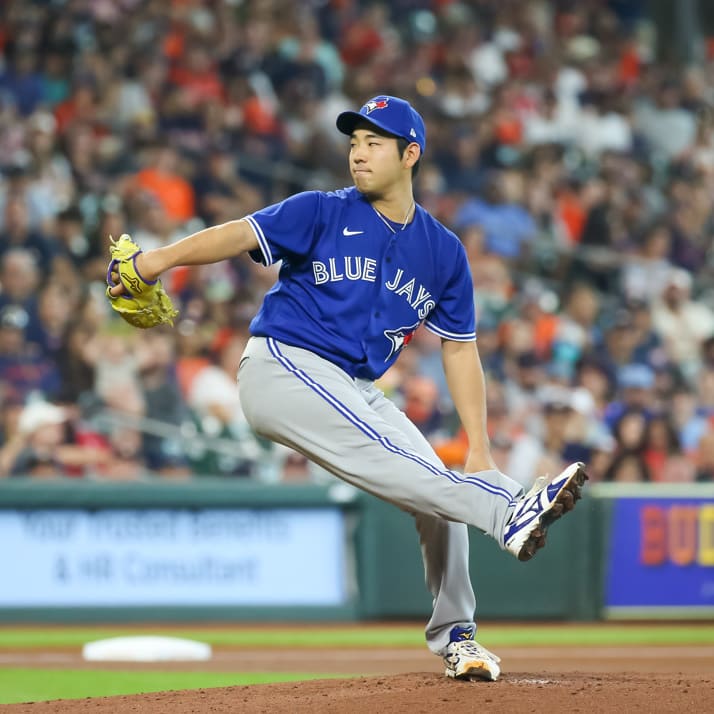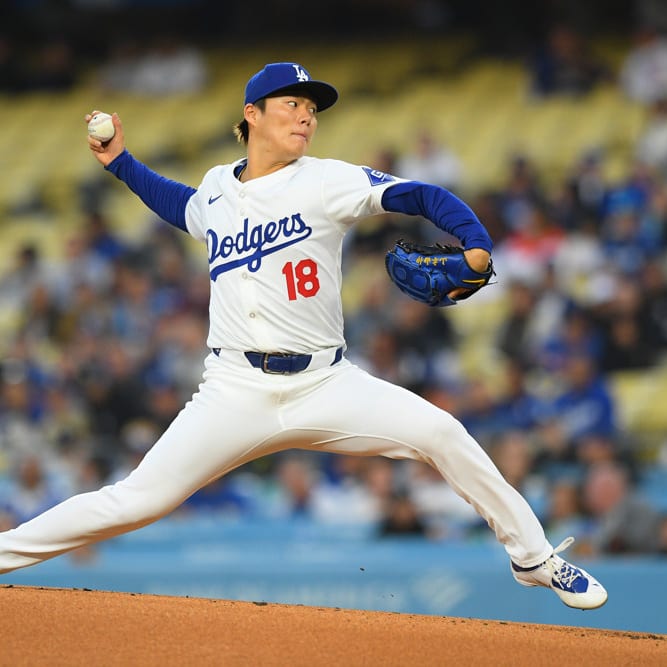This article is part of our The Z Files series.
There seem to be more multiple-eligibility players every year. Not including Shohei Ohtani, there are 49 hitters eligible at more than one spot in the top 460, according to the current National Fantasy Baseball Championship ADP. The breakdown is as follows, using seven appearances last season to assign eligibility:
- C: 1
- 1B: 17
- 2B: 37
- 3B: 20
- SS: 16
- OF: 25
Here are the players and their respective eligibility. Please note the columns are sortable.
| Player | ADP | Overall | C | 1B | 2B | 3B | SS | OF |
|---|---|---|---|---|---|---|---|---|
| Cody Bellinger | 17 | 1BOF | 1B | OF | ||||
| DJ LeMahieu | 31.19 | 1B2B3B | 1B | 2B | 3B | |||
| Whit Merrifield | 42.25 | 2BOF | 2B | OF | ||||
| Cavan Biggio | 63.88 | 2B3BOF | 2B | 3B | OF | |||
| Brandon Lowe | 75.88 | 2BOF | 2B | OF | ||||
| Jeff McNeil | 91.63 | 2B3BOF | 2B | 3B | OF | |||
| Max Muncy | 96.25 | 1B2B3B | 1B | 2B | 3B | |||
| Alec Bohm | 117.63 | 1B3B | 1B | 3B | ||||
| Dylan Moore | 123.75 | 2BOF | 2B | OF | ||||
| Mike Moustakas | 124.5 | 1B2B | 1B | 2B | ||||
| Tommy Edman | 124.88 | 2B3BSSOF | 2B | 3B | SS | OF | ||
| Dominic Smith | 136.63 | 1BOF | 1B | OF | ||||
| Daulton Varsho | 155.38 | COF | C | OF | ||||
| Andres Gimenez | 164.25 | 2B3BSS | 2B | 3B | SS | |||
| Jonathan Villar | 165.13 | 2BSS | 2B | SS | ||||
| Nick Solak | 165.5 | 2BOF | 2B | OF | ||||
| Ryan Mountcastle | 173.56 | 1BOF |
There seem to be more multiple-eligibility players every year. Not including Shohei Ohtani, there are 49 hitters eligible at more than one spot in the top 460, according to the current National Fantasy Baseball Championship ADP. The breakdown is as follows, using seven appearances last season to assign eligibility:
- C: 1
- 1B: 17
- 2B: 37
- 3B: 20
- SS: 16
- OF: 25
Here are the players and their respective eligibility. Please note the columns are sortable.
| Player | ADP | Overall | C | 1B | 2B | 3B | SS | OF |
|---|---|---|---|---|---|---|---|---|
| Cody Bellinger | 17 | 1BOF | 1B | OF | ||||
| DJ LeMahieu | 31.19 | 1B2B3B | 1B | 2B | 3B | |||
| Whit Merrifield | 42.25 | 2BOF | 2B | OF | ||||
| Cavan Biggio | 63.88 | 2B3BOF | 2B | 3B | OF | |||
| Brandon Lowe | 75.88 | 2BOF | 2B | OF | ||||
| Jeff McNeil | 91.63 | 2B3BOF | 2B | 3B | OF | |||
| Max Muncy | 96.25 | 1B2B3B | 1B | 2B | 3B | |||
| Alec Bohm | 117.63 | 1B3B | 1B | 3B | ||||
| Dylan Moore | 123.75 | 2BOF | 2B | OF | ||||
| Mike Moustakas | 124.5 | 1B2B | 1B | 2B | ||||
| Tommy Edman | 124.88 | 2B3BSSOF | 2B | 3B | SS | OF | ||
| Dominic Smith | 136.63 | 1BOF | 1B | OF | ||||
| Daulton Varsho | 155.38 | COF | C | OF | ||||
| Andres Gimenez | 164.25 | 2B3BSS | 2B | 3B | SS | |||
| Jonathan Villar | 165.13 | 2BSS | 2B | SS | ||||
| Nick Solak | 165.5 | 2BOF | 2B | OF | ||||
| Ryan Mountcastle | 173.56 | 1BOF | 1B | OF | ||||
| Trey Mancini | 181.94 | 1BOF | 1B | OF | ||||
| Jean Segura | 184.19 | 2B3B | 2B | 3B | ||||
| Jake Cronenworth | 207.25 | 1B2BSS | 1B | 2B | SS | |||
| Chris Taylor | 215.44 | 2BSSOF | 2B | SS | OF | |||
| Ryan McMahon | 228.44 | 1B2B3B | 1B | 2B | 3B | |||
| David Fletcher | 231.13 | 2B3BSS | 2B | 3B | SS | |||
| J.D. Davis | 240.06 | 3BOF | 3B | OF | ||||
| Hunter Dozier | 242.06 | 1BOF | 1B | OF | ||||
| Jurickson Profar | 243.94 | 2BOF | 2B | OF | ||||
| Willi Castro | 250.75 | 3BSS | 3B | SS | ||||
| Jon Berti | 262.44 | 2BOF | 2B | OF | ||||
| Garrett Hampson | 263.13 | 2BOF | 2B | OF | ||||
| Jeimer Candelario | 265.81 | 1B3B | 1B | 3B | ||||
| Mauricio Dubon | 265.94 | 2BSSOF | 2B | SS | OF | |||
| Tommy La Stella | 289.75 | 1B2B | 1B | 2B | ||||
| Isiah Kiner-Falefa | 307.44 | 3BSS | 3B | SS | ||||
| Joey Wendle | 311.44 | 2B3BSS | 2B | 3B | SS | |||
| Scott Kingery | 314.63 | 2BOF | 2B | OF | ||||
| Wilmer Flores | 344.69 | 1B2B | 1B | 2B | ||||
| Enrique Hernandez | 360.94 | 2BOF | 2B | OF | ||||
| Niko Goodrum | 373.56 | 2BSS | 2B | SS | ||||
| Luis Urias | 404.69 | 2B3BSS | 2B | 3B | SS | |||
| Freddy Galvis | 413.94 | 2BSS | 2B | SS | ||||
| Michael Chavis | 418 | 1B2BOF | 1B | 2B | OF | |||
| Nico Hoerner | 418.25 | 2BSS | 2B | SS | ||||
| Mike Brosseau | 421.75 | 1B2B3B | 1B | 2B | 3B | |||
| Yoshi Tsutsugo | 428.38 | 3BOF | 3B | OF | ||||
| Adam Frazier | 437.56 | 2BOF | 2B | OF | ||||
| Marwin Gonzalez | 442.63 | 1B2B3BOF | 1B | 2B | 3B | OF | ||
| Kevin Newman | 451.69 | 2BSS | 2B | SS | ||||
| Chad Pinder | 456.69 | 2B3B | 2B | 3B | ||||
| Jazz Chisholm | 457.06 | 2BSS | 2B | SS |
The obvious question is how useful are multiple-eligibility players, heretofore labeled MEPs? A couple of years ago, I crunched the numbers and estimated an MEP can add $3 to $4 worth of stats in mixed league and a buck or two in AL or NL-only. The player himself doesn't add the extra production, but the lineup flexibility he avails generates the bonus stats.
Even though the MEP's production doesn't change, you have to pay more for them, hoping the profit from the added stats exceeds the "overpay". For example, if a MEP is projected to earn $20, it's advisable to pay $21 or $22 since you're still a buck or two in the black. In a draft, $2 isn't even a rankings spot early in the first round. It's about a round through the first rounds then progressively grows to three rounds at the end. Here's an old piece displaying Historical Draft Slot Values.
Having a rough idea how much an MEP is worth is only part of the algebra. It's only wise to pay the premium if the pathway to add the extra stats is easily attainable. Before reviewing the utility of an MEP in different formats, there's another critical consideration.
Even if it turns out an MEP isn't especially helpful during the season, he may have been quite useful in the draft or auction. Having the ability to roster the best player who fits your plan is facilitated via MEPs. If you're an experienced auction player, you've no doubt encountered a scenario in which the perfect player gets nominated, but you have no legal spots for them available on your roster. With a few well-placed MEPs, you could have shuffled things around and added the player.
It's hard to quantify this scenario, but chances are it occurs towards the end of the auction since it usually takes a bit before your middle, corner and utility are occupied. As such, the difference in projected earnings between the perfect player and the consolation prize is a couple of bucks, maybe a little more since everyone has different player expectations at this point of the proceedings. It could be a larger difference, maybe even $5. Plus, once you're blocked at a spot, chances are you'll miss out on more desirable options. This is integral to keep in mind, since there will be some formats where MEPs aren't as useful in-season, so don't forget they have other benefits.
Best Ball
Make sure you know the rules as some sites assign just one position per player. Fantrax is an example. The games under the Fanball/NFBC umbrella allow a player to occupy the spot that renders the optimal lineup. In these formats, MEPs are gold.
You want as many players as possible with the ability to occupy an active roster spot. This increases the odds of having your most productive players active. The more batting spots you have covered with MEPs, the freer you are to roster more pitchers. This is helpful on a couple of levels. Pitchers get hurt at a higher rate, so you need the extra coverage. Even if they're not hurt, a starter could be scratched or a closer may not work in a save situation during that scoring period. Having as many arms as possible to jump into your optimal lineup is crucial.
Rolling this idea into the above chart, there are fewer MEP outfielders relative to their active roster spots. Drafting a few dual infield/outfield MEPs reduces the number of OF-only types necessary, again potentially allowing you to grab another pitcher.
On the other hand, second base is loaded with MEPs, with 37 of the 49 legal at the keystone. Drafting more than one 2B-only players may put you behind someone else in terms of flexibility. Another approach could be to roster a couple of the higher-ranked 2B-eligible MEPs, then backfilling with a few late 2B-only like Kolten Wong, Cesar Hernandez or Jonathan Schoop. If your higher-ranked MEP is needed elsewhere, you have coverage.
Draft and Hold
MEP usefulness is all about the opportunity they get to help. Next to best ball, MEPs could be most beneficial in draft and hold. By definition, there aren't in-season roster acquisitions in this format. Every MEP essentially adds another roster spot, with the caveat he can only be in the lineup once. Similar to best ball, multiple MEPs can open up another roster spot for a pitcher, increasing the chance of having someone with two starts in a given week.
An important point yet to be discussed is that MEPs should not be chosen arbitrarily. They're best when part of an eligibility chain, so every spot is covered. Something like 2BSS, 2B3B, 1B3B, 1BOF should permit activation of any reserve since you can move the above around to clear the needed spot. There are other combinations, such as 1B2B, 3BSS, 2BSS, 3BOF. Add in someone legal at three or four spots like Jeff McNeil or Tommy Edman and you're in great shape.
Limited Reserve List
Here is where things may be counterintuitive. On the surface, it seems the fewer reserves, the more MEPs are needed. However, the shorter the reserve, the fewer players at your disposal to deploy. In a league like the NFBC Main Event, there is a seven-man reserve, with no IL. It won't be long before you're holding a couple of hurt players. Almost everyone has a third closer or speculative saves source. Most have at least one starting pitcher with a tough matchup on reserve. Some like to stash minor-league players. This leaves two to four spots for batters. Many times, you won't need an MEP to replace an injured player. Others, there will be someone available via FAAB better than your reserves. The point is, assuming you paid a premium for the MEP, you may not be able to add the necessary stats to cover the added cost and turn a profit.
Admittedly, this could be tough to wrap your head around, but it makes sense, at least to me. Granted, this is just one study conducted on the 2019 NFBC Main Event, but I looked at how often the top teams reached for an MEP compared to the bottom dwellers and it was clear, the better teams did not focus on MEPs while the lesser squads made a point to roster them. Again, this was just one season, but the above narrative held true.
Apologies if you were hoping for more of an analytical approach, but there are too many moving parts to put an definitive dollar amount on MEPs. Hopefully, having a better understanding of how they influence a draft and in-season management helps guide the decision on when to draft one.










